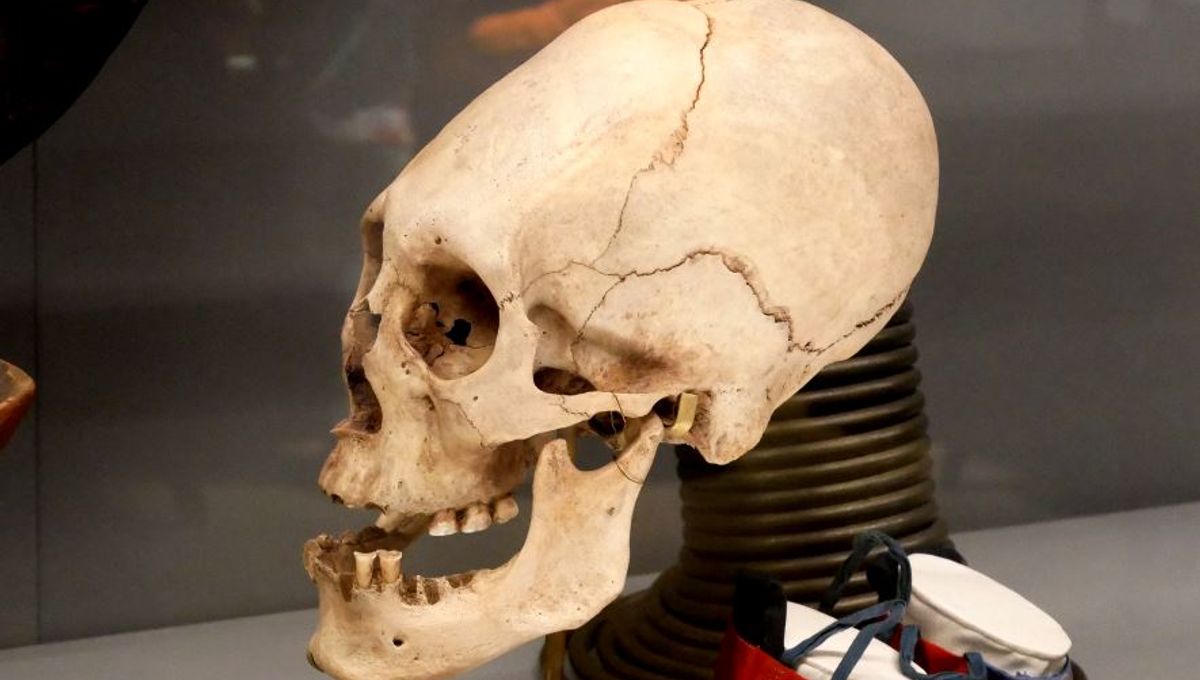
The warriors of a pre-Columbian powerhouse were able to distinguish battlefield friends from foes based on their deliberately misshapen skulls, according to the authors of a new study on artificial cranial deformation (ACD). Documenting the role of this grotesque practice within the ancient city of Tiwanaku, Bolivia, the researchers say that differences in head shape were used to convey social identity, class, and occupation, like a kind of uniform that can never be taken off.
Located on the border between modern-day Bolivia, Peru, and Chile, Tiwanaku was among the most powerful pre-Inca polities in the south-central Andes. With a population of around 40,000 people, the ancient city enjoyed an extended heyday between 500 and 1150 CE and was a major political force during this period.
Like other pre-Hispanic cultures, Tiwanaku has been associated with the ritual alteration of skulls. To learn more about this ancient custom, the study authors conducted a literature review on the history of ACD in the Andes.
“ACD was usually conducted within the first few months of an infant’s life before morphogenetic features became permanent,” write the researchers. According to their findings, it appears that the inhabitants of Tiwanaku used a variety of skull-shaping techniques in order to produce different effects.
For example, to achieve “tabular oblique deformation […] two wooden boards (oftentimes padded) were placed across the frontal and occipital regions of infants’ heads and fastened via bandages.” This resulted in a “box-like, flattened cranial vault,” often with “lateral bulging of the head,” leaving the face “foreshortened and wider.”
Describing a second method that produced similar results, the authors explain that “infants’ bodies were dorsally laid upon a flat, wooden surface. A vertical section of wood was bandaged to the flat, wooden surface at an angle, projecting upwards and resting upon the frontal region of the infants’ skulls.”
Finally, they say that a conical skull was achieved when “bands, belts, and wrappings were transversely strapped around infants’ heads with varying tightness. The compressive force was applied to the skull circumferentially.”
The point of the exercise was to delineate a person’s class, caste, and vocation, such as whether they were a slave or a soldier. “This was especially useful for warriors, who distinguished their fellow combatants from insurgents by differences in their cranial structure,” write the authors.
Aside from the disadvantage of being physically disfigured and marked out for a particular occupation from birth, it’s possible that being subjected to ACD may have also led to certain cognitive deficits. For instance, the researchers explain that damage to the brain’s frontal lobe resulting from cranial deformation could lead to impaired memory, attentiveness, and executive function.
Meanwhile, damage to the parietal lobe can hinder one’s ability to interpret sensory stimuli, while injuries to the temporal lobe have been linked to “irritability, hearing deficits, and impaired verbal memory and interpretation of others’ emotions.”
Whether or not the egg-headed inhabitants of Tiwanaku actually suffered any of these cognitive deficits is difficult to say. According to the authors, such detrimental effects “may have been overlooked as the era’s occupational demands were more labor-intensive than knowledge-driven.”
The study is published in the journal Child’s Nervous System.
Source Link: Pre-Inca Warriors Recognized Each Other By Their Artificially Deformed Skulls